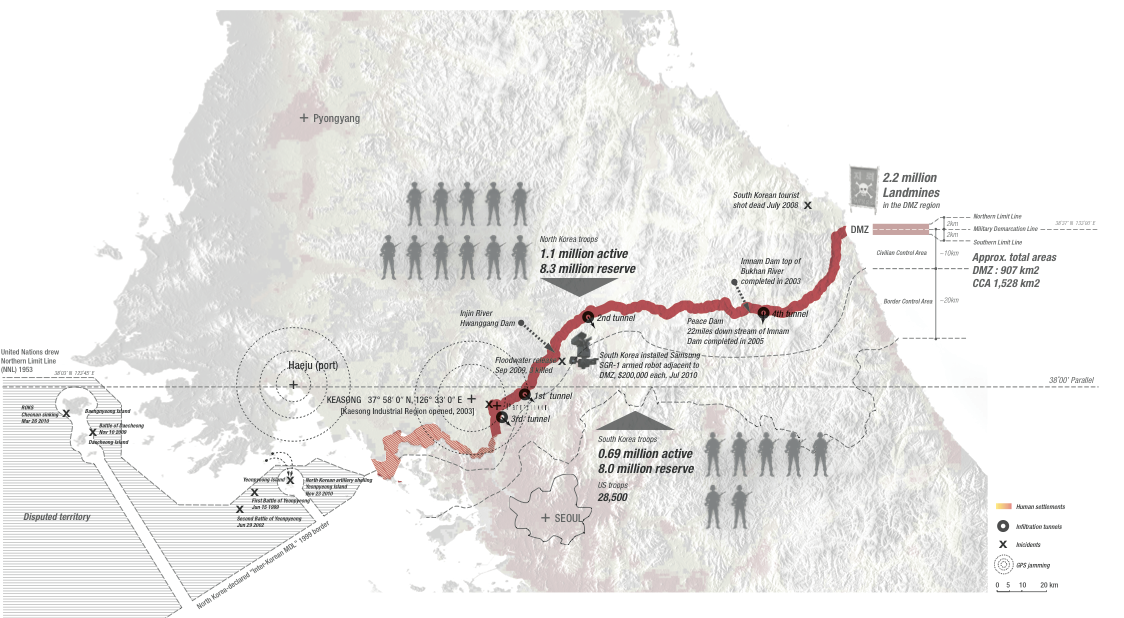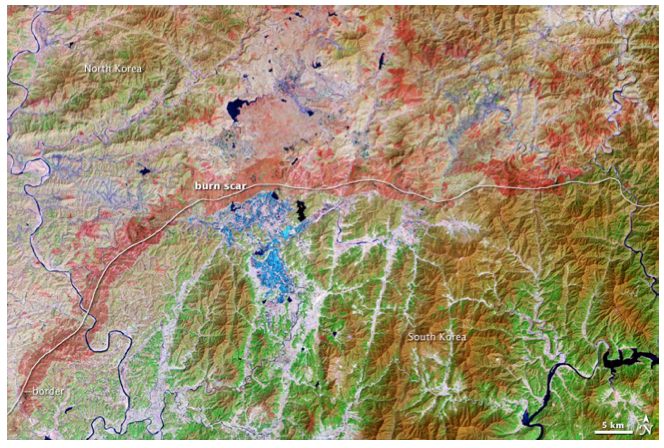Border as Urbanism: Redrawing the Demilitarized Zone (DMZ) between North and South Korea

by Dongsei Kim (MDes ’12)
Borders are everywhere and exist at every level of our lives. They are among the most fundamental instrument in modulating the logistics of space, more specifically what is inside and outside, delineating what is included and excluded. This thesis primarily deals with borders of nation-states, however the implications of the discourse are profound and pertinent at all scales of spatial design including, micro, meso, and macro scales that range from the local to the global.
Currently there are more than 200 independent nations, a number that is constantly increasing. Many of these are due to disputed borders, which result in dynamic shifts. Despite the increasing number and types of borders and the importance of the study of such in a globalizing world, designers’ understanding of borders has been limited. Consequently designers are often left out of the border “construction-operation-deconstruction” processes.

To better understand this disciplinary trend, my hypothesis is to read “border as urbanism,” in which borders are viewed as a dynamic set of complex spatial conditions layered over time, rather than as a static single line on a map. The hypothesis prioritizes spatiality in borders, which are, profoundly important as a means of understanding the complexity of borders for designers, but more importantly as a model to understand the concept of border as a process.
To recognize this disciplinary circumstance, I analyze contemporary representation of borders in urbanism. The analysis reveals that to a great extent, larger structural conditions dictate how designers understand borders. The fall of the Iron Curtain, end of the Cold War and proliferation of globalization were the main shifts that affected the way in which contemporary borders were understood. Within this context, recent shifts in urbanism representing national borders as dynamic entities—in which processes and flows are privileged in sharp contrast to the earlier static and abstract comprehension of borders as artifacts—are revealed.
Following the analysis, I survey contemporary work in geography and geopolitics to locate the analysis into the larger context of border studies, which is summarized into ten points. These points become a referential basis where “border as urbanism” is refined and acts as a starting point from which designers can start to engage border issues.
Finally, the “border as urbanism” hypothesis is tested against the most impenetrable border in the world, the Demilitarized Zone (DMZ) in Korea. The DMZ demonstrates that despite the border being impenetrable, diverse types and intensity of flows, reciprocities, and processes morph the borders over time and speak directly of externalities—hence urbanism. These physical and nonphysical deformations of the seemingly thin and static DMZ on the map are transformed into a form of urbanism that contains spatial complexity and specificity of its time and geography.
As a result, “border as urbanism” first reconceptualizes and expands the notion of borders in design disciplines and geopolitics. Secondly, it helps designers understand the basic notion of “inclusion” and “exclusion” and how “us” and “them” are defined to the edges of the “urban” and the “rural” via multiple scales over time. Lastly, it provides an additional methodology with which contested border conditions such as the DMZ can be compared and analyzed with their own specificity.